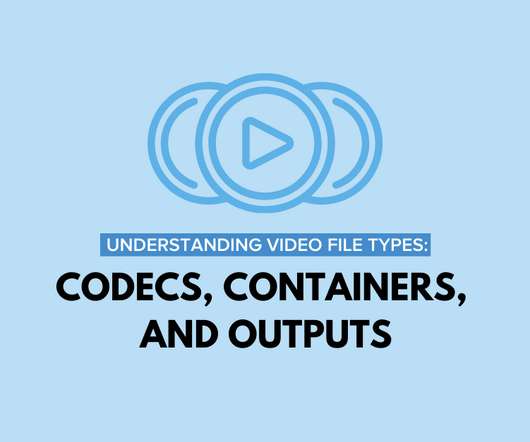Understanding Video File Types: Codecs, Containers, and Outputs
TechSmith Camtasia
JULY 19, 2021
While there are a plethora of video file types, which consist of codecs and containers, choosing the right one doesn’t have to be complicated — but it certainly can be. You may have heard the phrase video codec when referring to video files. It gives you much smaller file sizes with minimal quality loss.















Let's personalize your content